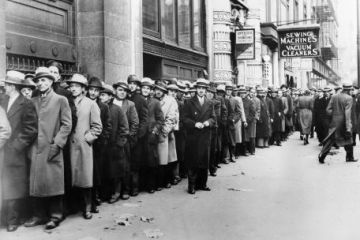Why Wall Street shorts economists and their DSGE models Very few Wall Street firms find the DSGE models useful … This should come as no surprise to anyone who has looked closely at the models. Can an economy of hundreds of millions of individuals and tens of thousands of different firms be distilled into just one household and one firm, which rationally optimize their risk-adjusted discounted expected returns over an infinite future? There is no empirical support for the idea. Indeed, research suggests that the models perform very poorly … Why does the profession want so desperately to hang on to the models? I see two possibilities. Maybe they do capture some deep understanding about how the economy works … More likely, economists find the models useful
Topics:
Lars Pålsson Syll considers the following as important: Economics
This could be interesting, too:
Lars Pålsson Syll writes Schuldenbremse bye bye
Lars Pålsson Syll writes What’s wrong with economics — a primer
Lars Pålsson Syll writes Krigskeynesianismens återkomst
Lars Pålsson Syll writes Finding Eigenvalues and Eigenvectors (student stuff)
Why Wall Street shorts economists and their DSGE models
Very few Wall Street firms find the DSGE models useful … This should come as no surprise to anyone who has looked closely at the models. Can an economy of hundreds of millions of individuals and tens of thousands of different firms be distilled into just one household and one firm, which rationally optimize their risk-adjusted discounted expected returns over an infinite future? There is no empirical support for the idea. Indeed, research suggests that the models perform very poorly …
Why does the profession want so desperately to hang on to the models? I see two possibilities. Maybe they do capture some deep understanding about how the economy works … More likely, economists find the models useful not in explaining reality, but in telling nice stories that fit with established traditions and fulfill the crucial goal of getting their work published in leading academic journals.
The unsellability of DSGE — private-sector firms do not pay lots of money to use DSGE models — is a strong argument against DSGE. But it is not the most damning critique of it.
In the basic DSGE models the labour market is always cleared – responding to a changing interest rate, expected lifetime incomes, or real wages, the representative agent maximizes the utility function by varying her labour supply, money holding and consumption over time. Most importantly – if the real wage somehow deviates from its equilibrium value, the representative agent adjust her labour supply, so that when the real wage is higher than its equilibrium value, labour supply is increased, and when the real wage is below its equilibrium value, labour supply is decreased.
In this model world, unemployment is always an optimal choice to changes in the labour market conditions. Hence, unemployment is totally voluntary. To be unemployed is something one optimally chooses to be.
 Although this picture of unemployment as a kind of self-chosen optimality, strikes most people as utterly ridiculous, there are also, unfortunately, a lot of mainstream economists out there who still think that price and wage rigidities are the prime movers behind unemployment. DSGE models basically explain variations in employment (and a fortiori output) with assuming nominal wages being more flexible than prices – disregarding the lack of empirical evidence for this rather counterintuitive assumption.
Although this picture of unemployment as a kind of self-chosen optimality, strikes most people as utterly ridiculous, there are also, unfortunately, a lot of mainstream economists out there who still think that price and wage rigidities are the prime movers behind unemployment. DSGE models basically explain variations in employment (and a fortiori output) with assuming nominal wages being more flexible than prices – disregarding the lack of empirical evidence for this rather counterintuitive assumption.
Lowering nominal wages would not clear the labour market. Lowering wages – and possibly prices – could, perhaps, lower interest rates and increase investment. It would be much easier to achieve that effect by increasing the money supply. In any case, wage reductions were not seen as a general substitute for an expansionary monetary or fiscal policy. And even if potentially positive impacts of lowering wages exist, there are also more heavily weighing negative impacts – management-union relations deteriorating, expectations of on-going lowering of wages causing delay of investments, debt deflation, etc.
The classical proposition that lowering wages would lower unemployment and ultimately take economies out of depressions, was ill-founded and basically wrong. Flexible wages would probably only make things worse by leading to erratic price-fluctuations. The basic explanation for unemployment is insufficient aggregate demand, and that is mostly determined outside the labour market.
Obviously, it’s rather embarrassing that the kind of DSGE models ‘modern’ macroeconomists use cannot incorporate such a basic fact of reality as involuntary unemployment. Of course, working with representative agent models, this should come as no surprise. The kind of unemployment that occurs is voluntary since it is only adjustments of the hours of work that these optimizing agents make to maximize their utility.
To me, this — the inability to explain involuntary unemployment — is the most damning critique of DSGE.
